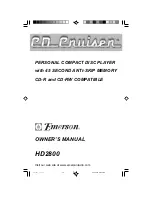
switch is in “off’ position.
• After turning the switch on, allow the cutter
block to come to full speed before commencing
the operation.
• Keep hands clear of all moving parts.
• Do not force the cut. Slowing or stalling the
cutter will force the overload to cut in and will
greatly reduce the life of the motor.
• Use quality dry timber. Blades last longer and
cuts are smoother with good quality wood.
• Do not pull the workpiece back over the cutter
block towards the infeed table.
• Support the work-piece adequately at all times
during operation; maintain control of the work-
piece.
• Take precautions against kickback, do not permit
anyone to stand or cross in the line of cutter-
head’s rotation. Kickback or thrown debris will
travel in this direction.
• Replace or sharpen blades as they become
damaged or dull.
• Whenever possible always use the push blocks
supplied to feed work across the cutter head.
1. Planing mode:
1.1 Setting the guide fence (8). (See Fig 10-
11)
1) Turn the fence angle locking handle (20) anti-
clockwise to loosen.
2) Use the angle guide (19) and the angle pointer
(17) to set the fence at the desired angle.
3) Re-tighten the locking handle (20) to secure the
fence guide (8).
Note:
There are positive stops at 45° and 90°
this is to make it easier to set the fence at these 2
popular angles.
1.2 Fitting the extraction port. (See Fig 12-
17)
The dust extraction port (F) is also one of the
safety devices of the planer thicknesser. Once
fitted correctly, the extraction port covers the
underside of the cutter-block and engages one
of the safety interlock switches, which allows the
machine to run safely.
1) Fit the height adjusting handle (11) over its
shaft.
2) Turn the crank anti-clockwise, this will lower the
thicknesing table.
Fig 11
Fig 12
Fig 13
Fig 10
BTP210F-M-070928.indd 14
2007-9-28 13:35:56














































